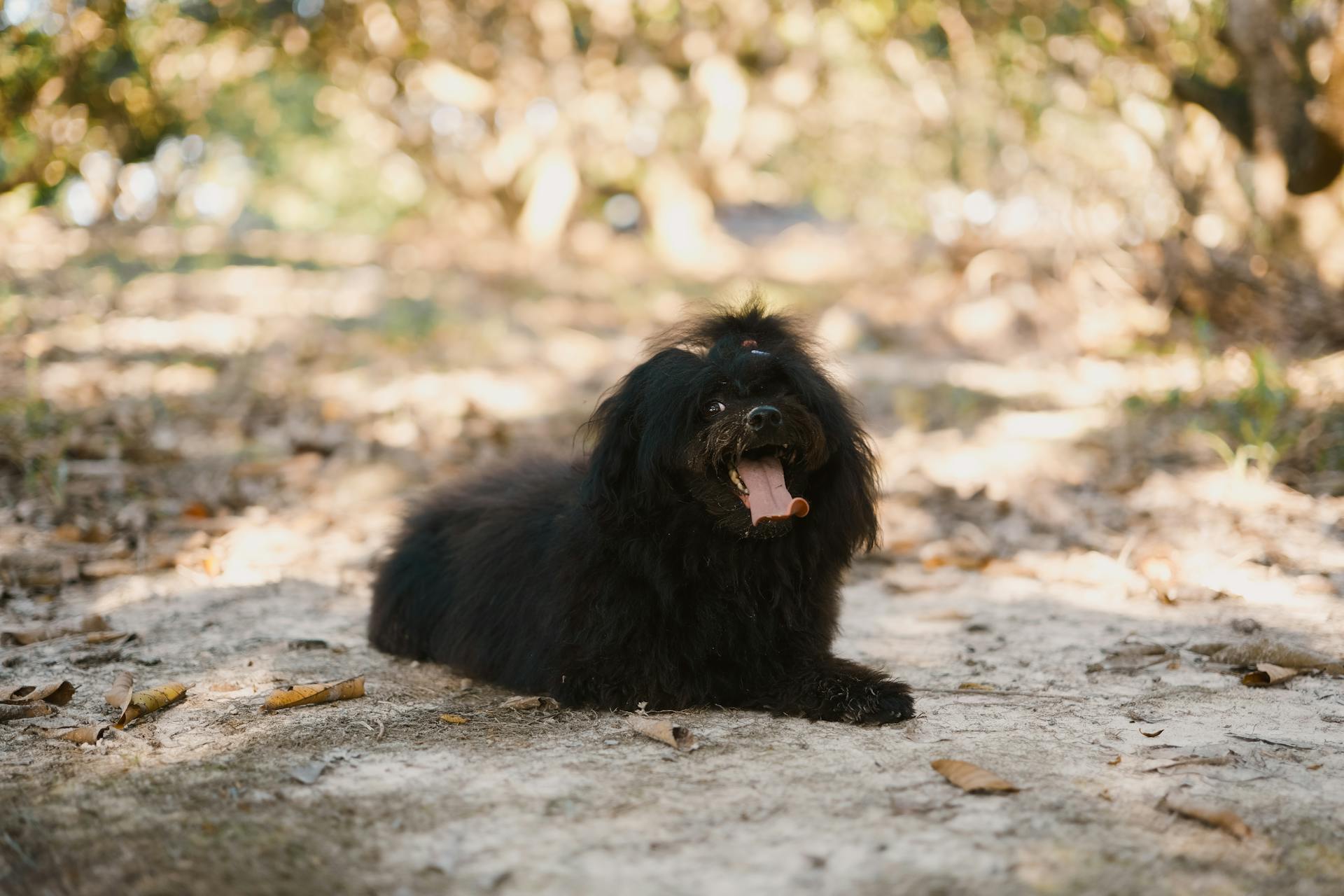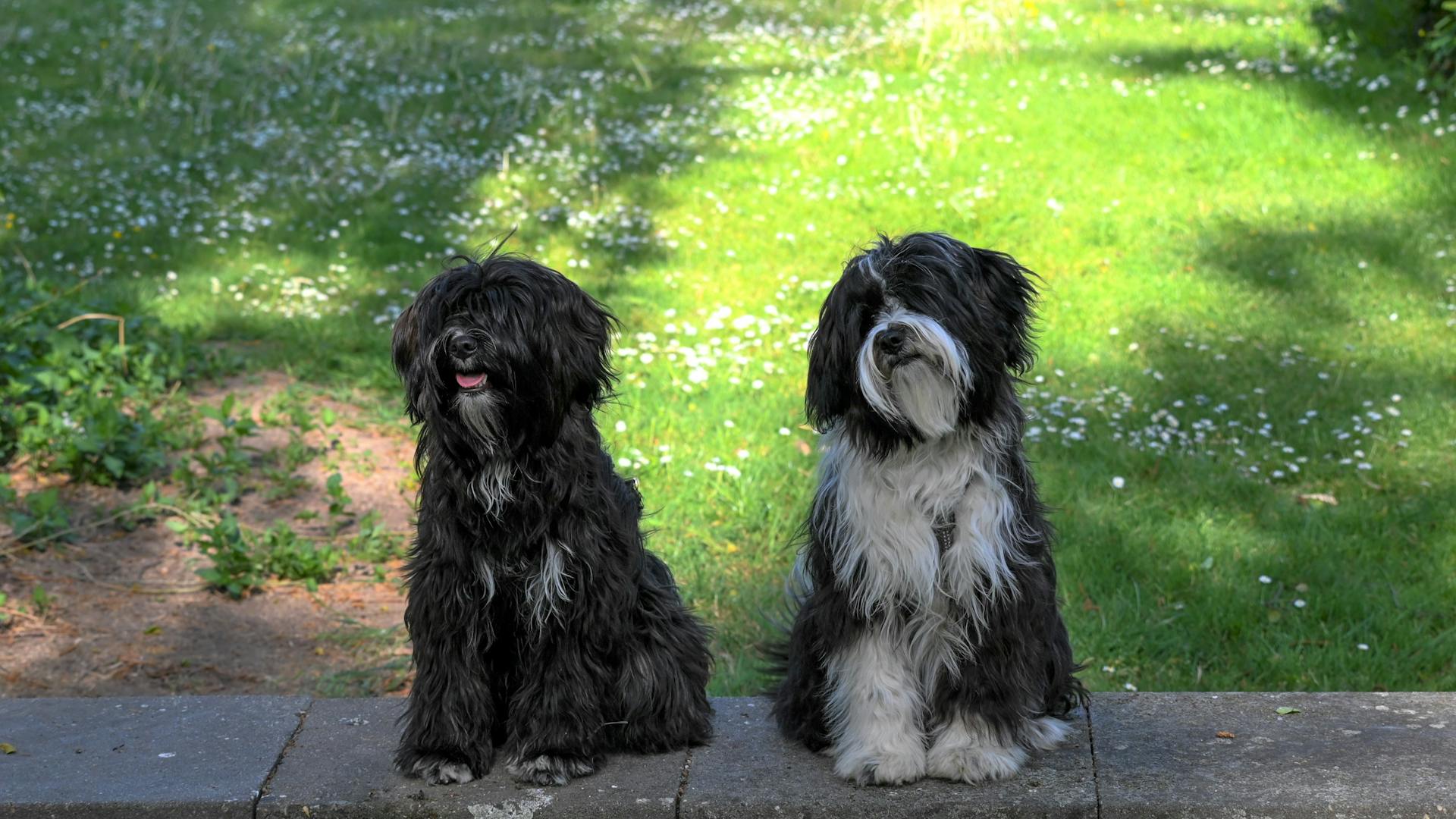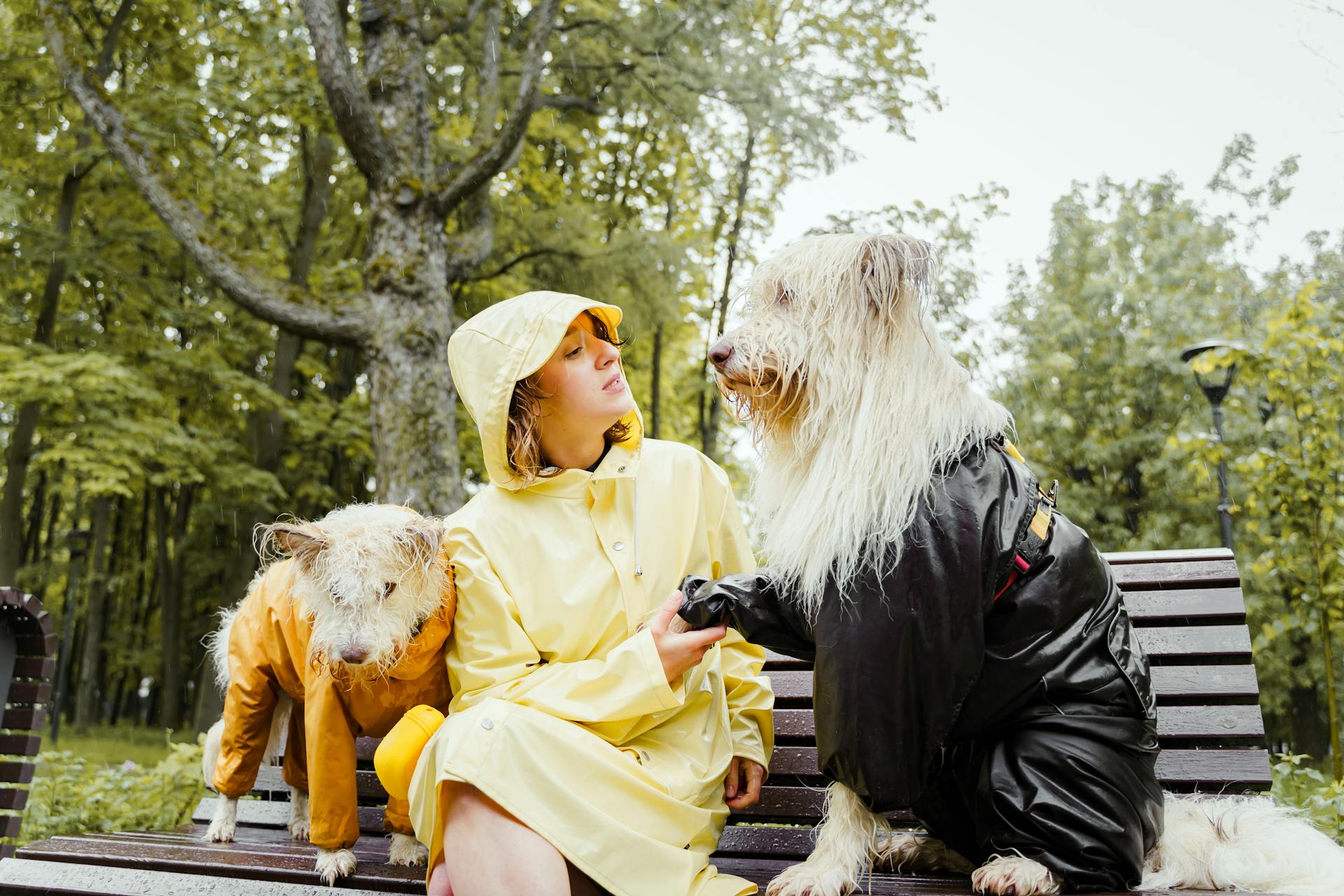
If you're considering bringing a Puli dog into your family through adoption, you're in for a treat. This ancient Hungarian breed is known for its distinctive corded coat and friendly, outgoing personality.
Pulis are highly intelligent dogs that thrive on mental and physical stimulation. They require regular exercise and training to prevent boredom and destructive behavior.
One of the biggest advantages of adopting a Puli is their relatively small size, making them a great fit for apartment living or families with smaller yards.
Puli Dog Basics
The Puli dog is a medium-sized herding breed that stands between 16-17 inches tall and weighs between 25-35 pounds. They are known for their curly, long coat and come in a variety of colors including black, gray, and white.
Pulis are highly intelligent dogs that require a lot of mental and physical stimulation. They need daily exercise and can excel in performance activities such as agility, herding, rally, and obedience.
Here are some key characteristics to consider when thinking about adopting a Puli:
Overall, Pulis are loyal and loving companions that thrive on activity and attention.
Temperament
The Puli dog is full of bouncing energy, always on the go and curious about its surroundings. They need daily exercise to keep them happy and healthy.
They're also very smart and headstrong, which means they can be a bit stubborn at times. This intelligence comes with a price, as they require consistent training and socialization from an early age.
Pulis are naturally suspicious and watchful around strangers, but with proper socialization, they can grow to be comfortable meeting new people. They're also very family-oriented and love to be close to their owners.
Their intelligence allows them to pick up on their owner's emotions, intuitively knowing when they're happy, sad, or mad. This unique trait makes them very loyal and loving companions.
With proper care and attention, a Puli can become a beloved member of the family, but it's essential to have experience as a dog owner to bring out their best qualities.
Appearance
The puli's unique coat is one of its most distinctive features. It's made up of naturally occurring cords that resemble dreadlocks and can reach all the way to the ground.
These cords are a result of the puli's double coat, which rarely sheds. The coat comes in a variety of colors including black, white, and gray.
The puli's coat is often mistaken for a shag rug, and it's not hard to see why. The cords can make the puli look like a mop dog, but don't let that fool you - it's a beautiful and unique breed.
The puli's coat requires regular maintenance to prevent matting and tangling. If you want to have a fully corded puli, be prepared to put in the time and effort to keep its coat looking its best.
You can tell a puli from a komondor by its size and color. Komondors are much larger than pulis, and their coats are always white.
If this caught your attention, see: Short Hair Rough Collie
Adoption
If you're considering adopting a Puli dog, you'll need to go through the adoption process.
The adoption process typically starts with an application, which should be as detailed as possible.
You'll be asked to include information about your lifestyle, family, accommodation, and work.
It's essential to consider the dog's personality and needs, so be sure to read the pet's bio and think about how they'll fit into your home.
The rescue organization will contact you via phone for a phone interview, and then arrange for you to meet the dog.
After meeting the dog, you'll have time to think about it and discuss with your family before contacting the rescue organization again.
The rescue organization may also request a home inspection to ensure the dog will be safe and happy in your home.
Be respectful and kind in your application and interactions with the rescue organization, and be open and honest about your lifestyle and needs.
Puli Dog Care
If you're considering bringing a puli puppy home, be prepared for some serious coat maintenance. Caring for her double coat takes a lot of time and effort, but it's worth it for that signature 'do.
To keep her cords from matting, start separating them when she's around eight to 10 months old. This will become a regular part of your grooming routine, and it can take up to five years for her coat to reach its full length.
Brushing is an option too - weekly brushing is required for a brushed, uncorded coat. Just remember, you're going for a shaggy dog look, not a perfectly coiffed one.
Here are some tips for bathing your puli:
- Bathe her more often if she's active outside
- Give yourself plenty of time to rinse and dry her cords - it can take a long time
- Squeeze excess water from her fur to prevent matting
- Get her 100-percent dry to prevent mildew
Regular ear cleaning, nail trimming, and dental care are also essential for your puli's health and happiness.
Care
Caring for a puli's coat is a significant commitment, requiring regular maintenance to prevent matting and tangling.
You'll need to decide whether to grow your puli's cords or opt for a brushed, uncorded coat. If you choose to grow cords, start separating them when your pup is around eight to 10 months old.
Explore further: Rough Coat Border Collie
Brushing a puli's coat, whether corded or uncorded, is essential to prevent matting and keep them looking their best. If you go for a brushed coat, you'll need to brush your puli every week.
Bathing your puli can be a time-consuming process, especially if they're active and get dirty often. You'll need to give yourself plenty of time to thoroughly rinse and dry their cords.
A puli's ears, nails, and teeth require regular attention to keep them clean and healthy. Make sure to take the time to clean their ears, trim their nails, and brush their teeth often.
Training a puli requires creativity and flexibility, as they're highly intelligent and can get bored with repetitive routines. Consistency, praise, and rewards for good behavior are key to successful training.
On a similar theme: How Much Exercise Do Husky Dogs Need
Health
The Puli's lifespan is typically between 10-15 years, which is a relatively long life for a dog of its size.
Health issues can affect any dog, and the Puli is no exception. Major concerns include CHD, with no minor concerns listed.
Readers also liked: Best Dog Food for Dogs with No Teeth
Some less common health issues that may be seen in Puli dogs include PRA, deafness, degenerative myelopathy, and patellar luxation.
To monitor your Puli's health, you may want to consider the following tests: hip, eye, (hearing), knee, and DNA for myelopathy.
Hip dysplasia, a condition where the hip joint doesn't develop properly, is a significant concern for Puli owners. If left untreated, it can cause osteoarthritis.
Patellar abnormalities and hereditary eye disorders are also potential health issues that may affect your Puli.
Degenerative myelopathy, a debilitating progressive mobility disorder in the spinal cord, can be screened for using a DNA test.
Regular grooming is essential for Puli owners, as their coat can be prone to skin irritation or infection if not properly maintained.
Curious to learn more? Check out: Hip Problems in Border Collies
Living Needs
Pulis are adaptable dogs that can thrive in various living situations, including apartments in cities like New York. They require plenty of exercise and attention to stay healthy and happy.
Adequate exercise is essential for pulis, and a big yard isn't necessary for them to get enough physical activity. They need to be taken out for regular walks, jogs, or hikes to keep them active and engaged.
Pulis need to be socialized with cats and other dogs from an early age so they can learn to get along with other pets. They can be good companions at home, but in new environments, they tend to ignore dogs they don't know.
Pulis are natural athletes and excel in dog activities like agility, herding, and obedience. They have a high drive nature and require mental and physical exercise and stimulation to thrive.
If this caught your attention, see: Do Border Collies Need to Be Groomed
Featured Images: pexels.com


